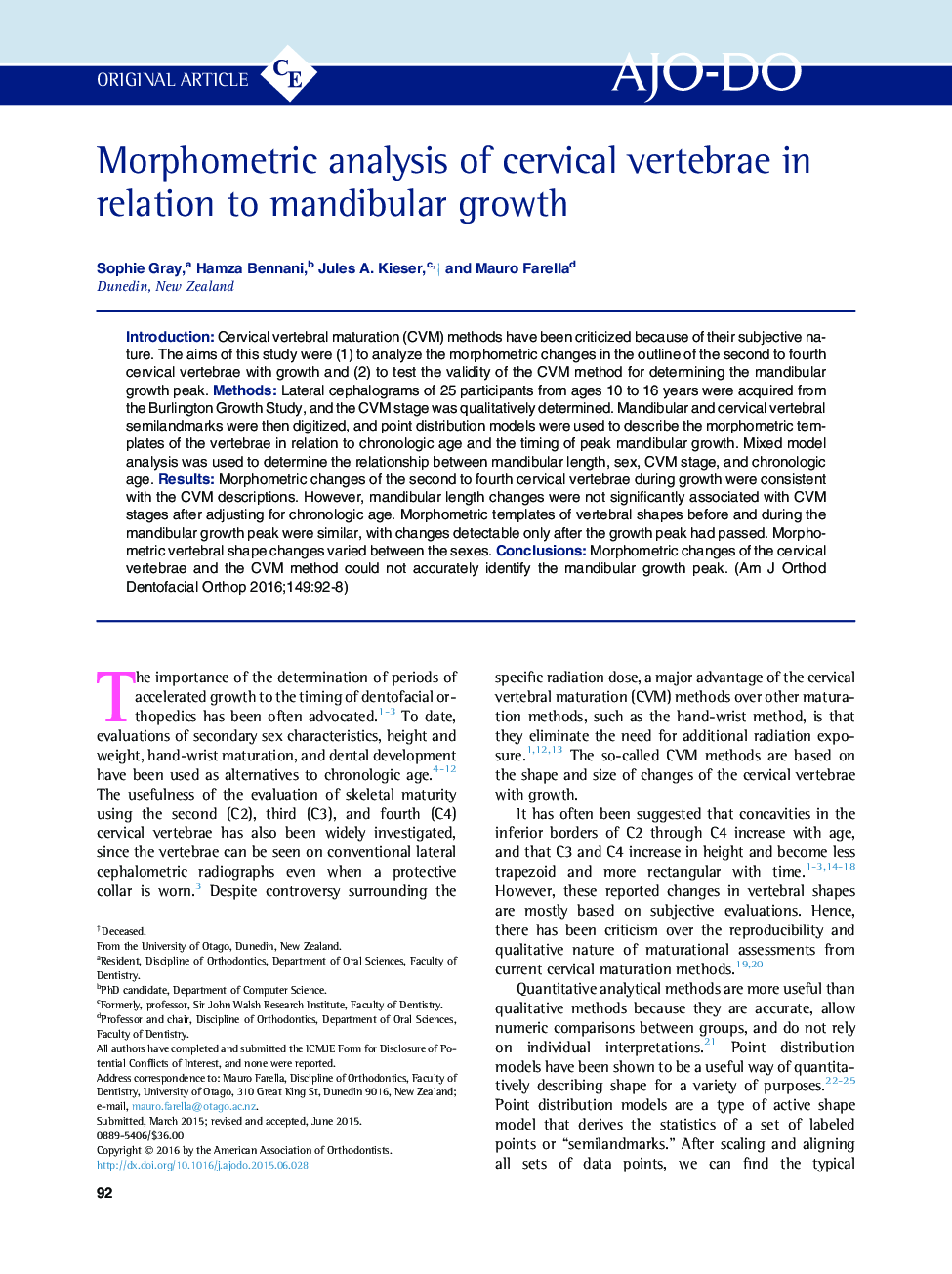| Article ID | Journal | Published Year | Pages | File Type |
|---|---|---|---|---|
| 3115763 | American Journal of Orthodontics and Dentofacial Orthopedics | 2016 | 7 Pages |
•Morphometric changes of cervical vertebrae are consistent with the CVM descriptions.•Morphometric vertebral changes do not accurately identify the mandibular growth peak.•Morphometric vertebral changes can be detected only after the mandibular growth peak.
IntroductionCervical vertebral maturation (CVM) methods have been criticized because of their subjective nature. The aims of this study were (1) to analyze the morphometric changes in the outline of the second to fourth cervical vertebrae with growth and (2) to test the validity of the CVM method for determining the mandibular growth peak.MethodsLateral cephalograms of 25 participants from ages 10 to 16 years were acquired from the Burlington Growth Study, and the CVM stage was qualitatively determined. Mandibular and cervical vertebral semilandmarks were then digitized, and point distribution models were used to describe the morphometric templates of the vertebrae in relation to chronologic age and the timing of peak mandibular growth. Mixed model analysis was used to determine the relationship between mandibular length, sex, CVM stage, and chronologic age.ResultsMorphometric changes of the second to fourth cervical vertebrae during growth were consistent with the CVM descriptions. However, mandibular length changes were not significantly associated with CVM stages after adjusting for chronologic age. Morphometric templates of vertebral shapes before and during the mandibular growth peak were similar, with changes detectable only after the growth peak had passed. Morphometric vertebral shape changes varied between the sexes.ConclusionsMorphometric changes of the cervical vertebrae and the CVM method could not accurately identify the mandibular growth peak.
